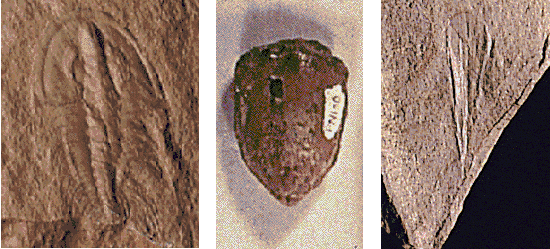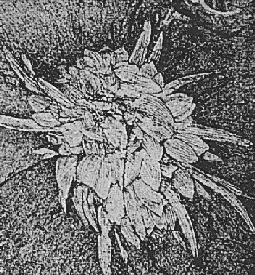









Almost every metazoan phylum with hard parts, and many that lack hard parts, made its first appearance in the Cambrian. The only modern phylum with an adequate fossil record to appear after the Cambrian was the phylum Bryozoa, which is not known before the early Ordovician. A few mineralized animal fossils, including sponge spicules and probable worm tubes, are known from the Vendian period immediately preceding the Cambrian. Some of the odd fossils of the "Ediacara biota" from the Vendian may also have been animals in or near living phyla, although this remains a somewhat controversial topic. However, the Cambrian was nonetheless a time of great evolutionary innovation, with many major groups of organisms appearing within a span of only forty million years. Trace fossils made by animals also show increased diversity in Cambrian rocks, showing that the animals of the Cambrian were developing new ecological niches and strategies -- such as active hunting, burrowing deeply into sediment, and making complex branching burrows. Finally, the Cambrian saw the appearance and/or diversification of mineralized algae of various types, such as the coralline red algae and the dasyclad green algae.
This does not mean that life in the Cambrian seas would have been perfectly familiar to a modern-day scuba diver! Although almost all of the living marine phyla were present, most were represented by classes that have since gone extinct or faded in importance. The Brachiopoda for example, was present, but greatest diversity was shown by inarticulate brachiopods (like the one in the upper middle, from the Upper Cambrian of Iowa). The articulate brachiopods, which would dominate the marine environment in the later Paleozoic, were still relatively rare and not especially diverse. Cambrian echinoderms were predominantly unfamiliar and strange-looking types such as early edrioasteroids, eocrinoids, and helicoplacoids. The more familiar starfish, brittle stars, and sea urchins had not yet evolved, and there is some controversy over whether crinoids (sea lilies) were present or not. Even if present, crinoids were rare in the Cambrian, although they became numerous and diverse through the later Paleozoic. And while jawless vertebrates were present in the Cambrian, it was not until the Ordovician that armored fish became common enough to leave a rich fossil record.
Other dominant Cambrian invertebrates with hard parts were trilobites (like the one on the upper left, Nevadella from the Lower Cambrian of southwest Nevada); archaeocyathids (relatives of sponges that were restricted to the Lower Cambrian), and problematic conical fossils known as hyolithids (like the one on the upper right, also from the Lower Cambrian of Nevada). Many Early Cambrian invertebrates are known only from "small shelly fossils" - tiny plates and scales and spines and tubes and so on. Many of these were probably pieces of the skeletons of larger animals.
A few localities around the world that preserve soft-bodied fossils of the Cambrian show that the "Cambrian radiation" generated many unusual forms not easily comparable with anything today. The best-known of these sites is the legendary Burgess Shale (Middle Cambrian) in the British Columbian Rocky Mountains. Sites in Utah, southern China, Siberia, and north Greenland are also noted for their unusually good preservation of non-mineralized fossils from the Cambrian. One of these "weird wonders", first documented from the Burgess Shale, is Wiwaxia, depicted at lower left. Wiwaxia was an inch-long, creeping, scaly and spiny bottom dweller that may have been a relative of the molluscs, the annelids, or possibly an extinct animal group that combined features of both phyla.
Read about the Cambrian Mass Extinction at the Hooper Virtual Paleontology Museum.
See Strange Creatures - A Burgess Shale Fossil Sampler — another website about these unusual critters, this one from the Smithsonian.
Find out more about the Cambrian paleontology and geology of North America at the Paleontology Portal.


